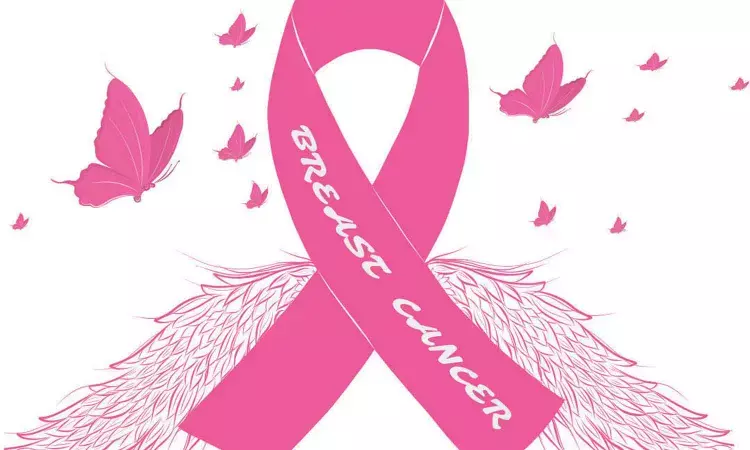- Home
- Medical news & Guidelines
- Anesthesiology
- Cardiology and CTVS
- Critical Care
- Dentistry
- Dermatology
- Diabetes and Endocrinology
- ENT
- Gastroenterology
- Medicine
- Nephrology
- Neurology
- Obstretics-Gynaecology
- Oncology
- Ophthalmology
- Orthopaedics
- Pediatrics-Neonatology
- Psychiatry
- Pulmonology
- Radiology
- Surgery
- Urology
- Laboratory Medicine
- Diet
- Nursing
- Paramedical
- Physiotherapy
- Health news
- Fact Check
- Bone Health Fact Check
- Brain Health Fact Check
- Cancer Related Fact Check
- Child Care Fact Check
- Dental and oral health fact check
- Diabetes and metabolic health fact check
- Diet and Nutrition Fact Check
- Eye and ENT Care Fact Check
- Fitness fact check
- Gut health fact check
- Heart health fact check
- Kidney health fact check
- Medical education fact check
- Men's health fact check
- Respiratory fact check
- Skin and hair care fact check
- Vaccine and Immunization fact check
- Women's health fact check
- AYUSH
- State News
- Andaman and Nicobar Islands
- Andhra Pradesh
- Arunachal Pradesh
- Assam
- Bihar
- Chandigarh
- Chattisgarh
- Dadra and Nagar Haveli
- Daman and Diu
- Delhi
- Goa
- Gujarat
- Haryana
- Himachal Pradesh
- Jammu & Kashmir
- Jharkhand
- Karnataka
- Kerala
- Ladakh
- Lakshadweep
- Madhya Pradesh
- Maharashtra
- Manipur
- Meghalaya
- Mizoram
- Nagaland
- Odisha
- Puducherry
- Punjab
- Rajasthan
- Sikkim
- Tamil Nadu
- Telangana
- Tripura
- Uttar Pradesh
- Uttrakhand
- West Bengal
- Medical Education
- Industry
Image guided biopsy can detect residual breast cancer after chemotherapy: JAMA

Delhi: Image-guided vacuum-assisted biopsy (VAB) can predict the presence of residual cancer when performed after treatment of breast cancer patients with neoadjuvant chemotherapy (NACT), suggests a recent study in the journal JAMA Surgery.
Image-guided breast biopsy of a tumor bed or a residual imaging abnormality after neoadjuvant chemotherapy is being used increasingly for facilitating risk-adaptive surgery, assessing residual cancer, and potentially identifying exceptional responders in whom local therapy may be de-escalated. Marios Konstantinos Tasoulis, The Royal Marsden NHS Foundation Trust, London, United Kingdom, and colleagues further assessed the accuracy of post-NACT image-guided biopsy to predict residual cancer in the breast.
The diagnostic study analyzed multicenter patient-level data of breast cancer patients treated with NACT and underwent image-guided VAB before surgery at MD Anderson Cancer Center in Houston, Texas, Seoul National University Hospital in Seoul, South Korea, and Royal Marsden Hospital in London, UK. Data from 66 women (median age; 49 years) were analyzed from June to July 2019. The median (range) tumor size on pretreatment and posttreatment imaging was 33.5 (12-100) mm and 10 (0-100) mm, respectively.
The primary outcome was the Diagnostic accuracy of post-NACT image-guided biopsy. Final surgical pathology was used as a reference standard.
Key findings of the study include:
- The overall pathologic complete response rate was 51.2% (n = 85) (16.1% for hormone receptor–positive/ERBB2 (formerly HER2)-negative; 44.7% for hormone receptor–positive/ERBB2-positive; 69% for hormone receptor–negative/ERBB2-positive; and 66.1% for triple-negative).
- The majority (86.1%) underwent image-guided vacuum-assisted biopsy (VAB), and 23 had core-cut biopsy.
- The median (range) needle gauge was 10, and the median (range) the number of samples was 6.
- When image-guided biopsy (VAB and core-cut biopsy) was representative (95.8%), the false-negative rate across the whole cohort was 18.7%.
- Subgroup analysis of patients with a complete/partial clinical response and residual imaging abnormality of 2 cm or smaller with at least 6 VABs taken (45.8%) demonstrated a false-negative rate of 3.2%, a negative predictive value of 97.4%, and overall accuracy of 89.5%.
"This large multicenter pooled data analysis suggests that a standardized protocol using image-guided VAB of a tumor bed measuring 2 cm or smaller with 6 or more representative samples allows reliable prediction of residual disease,' wrote the authors.
"These findings can inform the design of deescalation trials testing the elimination of surgery in exceptional responders," they concluded.
The study, "Accuracy of Post–Neoadjuvant Chemotherapy Image-Guided Breast Biopsy to Predict Residual Cancer," is published in the journal JAMA Surgery.
DOI: https://jamanetwork.com/journals/jamasurgery/article-abstract/2771053
Dr Kamal Kant Kohli-MBBS, DTCD- a chest specialist with more than 30 years of practice and a flair for writing clinical articles, Dr Kamal Kant Kohli joined Medical Dialogues as a Chief Editor of Medical News. Besides writing articles, as an editor, he proofreads and verifies all the medical content published on Medical Dialogues including those coming from journals, studies,medical conferences,guidelines etc. Email: drkohli@medicaldialogues.in. Contact no. 011-43720751


